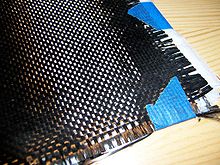Geothermal energy is heat energy that is stored within the earth. Learn the methods being used to tap into this thermal energy to heat buildings and generate electricity as well as the advantages and disadvantages of this renewable energy source.
Geothermal Energy
From space, the earth's surface is seen as peaceful groupings of land and water, but inside the earth, it is turbulent and hot. Below the earth's crust lie layers of molten rock called magma, and at the earth's core, temperatures can be as hot as 9,000 degrees Fahrenheit. In this lesson, you will learn how this natural heat can be pulled to the surface and used to heat buildings and produce electricity, as well as the pros and cons of this energy source.
Geothermal energy is defined as heat from within the earth that can be used for heating or to generate electricity. This is an easy term to recall if you remember that the prefix 'geo' means 'earth' and the word 'thermal' means 'heat.' So, geothermal literally means 'earth's heat.' As we mentioned, there are extreme amounts of heat found at the core of the earth. In fact, this intense heat is enough to melt rocks, resulting in magma. Magma that reaches the earth's surface through cracks in the earth's crust is known as lava.
However, magma does not always come to the surface of the earth. If it stays trapped within the layers of the earth, it can heat underground water. It can form natural pools of heated water, known as 'hot springs,' or gushing jets of hot water and steam that burst up from the earth's surface, known as 'geysers.'
If the heated water within the earth does not reach the earth's surface, it remains as underground concentrations of hot water and steam, known as geothermal reservoirs. By tapping into geothermal reservoirs, we can efficiently heat our homes and businesses and even generate electricity. Let's take a look at how this is done.
Geothermal Heat Pumps
Geothermal heat pumps, also known as ground source heat pumps, are systems that use the stable temperature of the earth to heat and cool buildings. A few feet below the surface of the earth, the temperature stays at about 50 degrees Fahrenheit year-round. Geothermal heat pumps rely on this relatively constant temperature to both heat and cool buildings.
Water and other fluids are circulated through a loop of buried pipes. In the winter, heat from the ground is pulled into the building and circulated through a duct system. In the summer, the process is reversed. The building's heat is picked up by the circulating fluids within the pipes and transferred into the earth, helping to cool the building.
Geothermal Power Plants
Geothermal heat pumps show how geothermal energy can be used for heating, but it can also be used to generate electricity. Geothermal power plants are facilities that convert the earth's natural heat into electricity. These plants drill wells into geothermal reservoirs to bring hot water and steam from deep within the earth to the surface. All geothermal power plants use steam to spin turbines attached to electricity generators. However, there are three different types of geothermal power plants. The one selected for an area will depend on the temperature and pressure of the available geothermal reservoir.
A dry steam plant directly uses steam to spin a turbine. These systems use very little water, hence the name 'dry.' This is the oldest and least complex of the three designs, but because this is an open system, it can release hazardous substances, such as hydrogen sulfide, into the atmosphere.
A flash steam plant moves high-pressure geothermal water into low-pressure tanks to produce a flash of steam to spin a turbine. After the steam is used, it is cooled and condensed back into water and injected back down to the reservoir.
A binary cycle plant uses geothermal water to heat a secondary fluid that spins a turbine. You can recall this term by remembering that 'binary' refers to 'two components.' A binary cycle plant relies on the cycling of two fluids - the hot water and a secondary fluid.
The advantage of a binary cycle plant is that lower temperature geothermal water can be used to generate electricity. With this system, moderately hot water is passed through a heat exchanger, where it heats a secondary liquid that has a lower boiling point than water. This fluid then flashes to vapor to spin the turbine.

